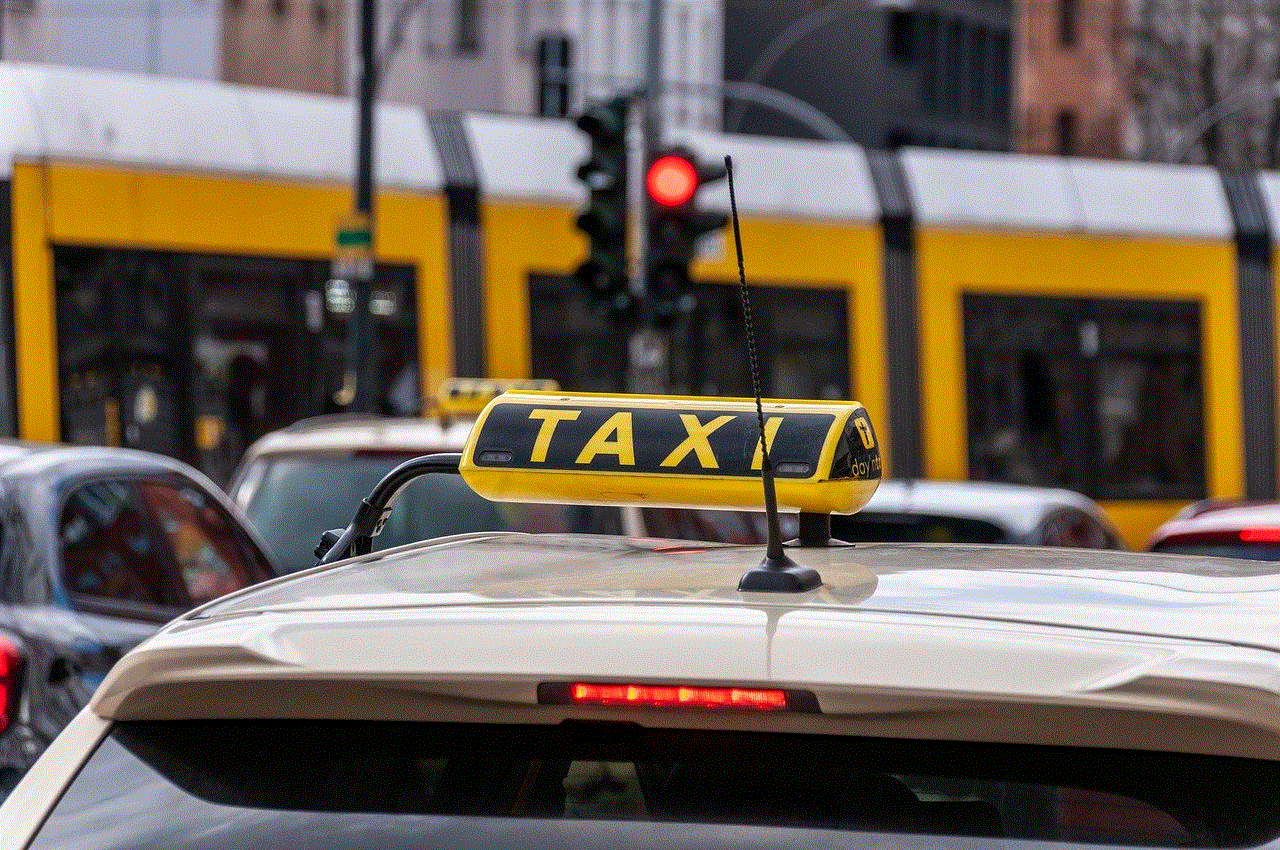how to turn off wifi sync on iphone
In today’s digital age, staying connected has become a top priority for most people. With the rise of smartphones, tablets, and other portable devices, having access to the internet at all times has become a necessity. This is why features like Wi-Fi sync have become so popular on devices like the iPhone. Wi-Fi sync allows users to synchronize their files, apps, and other data wirelessly between their iPhone and other devices. However, there may be times when you want to turn off Wi-Fi sync on your iPhone for various reasons. In this article, we will discuss how to turn off Wi-Fi sync on iPhone and why you may want to do so.
Before we dive into the steps to turn off Wi-Fi sync on your iPhone, let’s first understand what Wi-Fi sync is and how it works. As the name suggests, Wi-Fi sync uses a wireless connection to synchronize data between your iPhone and other devices, such as your computer or iPad. This means that you don’t need to physically connect your iPhone to your computer to transfer files or sync your data. Instead, Wi-Fi sync uses your home Wi-Fi network to establish a connection between your devices, making the syncing process much more convenient and efficient.
To turn off Wi-Fi sync on your iPhone, follow these simple steps:
Step 1: Open the Settings app on your iPhone.
Step 2: Scroll down and tap on “General.”
Step 3: Scroll down again and tap on “iTunes Wi-Fi Sync.”
Step 4: Toggle the “iTunes Wi-Fi Sync” button to the off position.
Step 5: A pop-up message will appear asking if you want to disable Wi-Fi sync. Tap “Disable” to confirm.
And that’s it! You have successfully turned off Wi-Fi sync on your iPhone. This means that your iPhone will no longer automatically sync with your computer or other devices when connected to the same Wi-Fi network. However, it’s important to note that you can still manually sync your iPhone with your computer using a USB cable even if Wi-Fi sync is turned off.
Now that you know how to turn off Wi-Fi sync on your iPhone, let’s discuss some reasons why you may want to do so.
1. To conserve battery life
Wi-Fi sync can drain your iPhone’s battery, especially if you have a lot of data to sync. This is because the Wi-Fi connection needs to be constantly active for syncing to take place. So, if you’re trying to conserve battery life on your iPhone, turning off Wi-Fi sync can help.
2. To troubleshoot syncing issues
Sometimes, the syncing process may not work smoothly, and you may encounter errors or interruptions. In such cases, turning off Wi-Fi sync and then turning it back on can help troubleshoot the issue. This will reset the connection and may resolve any syncing problems you were experiencing.
3. To prevent unauthorized syncing
If you use your iPhone for work or have sensitive data on it, you may want to turn off Wi-Fi sync to prevent anyone else from syncing their devices with yours. This is especially important if you regularly connect to public Wi-Fi networks, which can be less secure and make your iPhone vulnerable to unauthorized syncing.
4. To free up network bandwidth
Wi-Fi sync can use a significant amount of your home Wi-Fi network’s bandwidth, especially if you have a large amount of data to sync. This can slow down your network and affect the performance of other devices connected to it. By turning off Wi-Fi sync, you can free up network bandwidth and improve the overall performance of your home network.
5. To save storage space
If you have limited storage space on your iPhone, you may want to turn off Wi-Fi sync to prevent large files from being automatically synced and taking up more storage space. This can be particularly helpful if you have a lot of high-resolution photos or videos that you don’t want to sync to your computer.
6. To avoid accidental syncing
Accidentally syncing your iPhone with a computer or other device can result in the loss of important data, such as photos, contacts, or documents. By turning off Wi-Fi sync, you can avoid this risk and ensure that your data remains safe and secure on your iPhone.
7. To maintain privacy
Wi-Fi sync can potentially compromise your privacy if you have sensitive data on your iPhone. For example, if you have confidential work documents or personal photos that you don’t want others to access, turning off Wi-Fi sync can help protect your privacy and keep your data secure.
8. To avoid interruptions
Wi-Fi sync can be a bit of a nuisance if you’re using your iPhone for other tasks, such as streaming music or watching videos. The constant syncing can cause interruptions or slow down your device. By turning off Wi-Fi sync, you can avoid these interruptions and ensure a smoother user experience.
9. To reduce data usage
If you have a limited data plan, Wi-Fi sync can consume a significant amount of data, especially if you have a large amount of data to sync. By turning off Wi-Fi sync, you can save on data usage and avoid any extra charges on your phone bill.
10. To improve performance
If you have an older iPhone model or are running low on storage space, turning off Wi-Fi sync can help improve the overall performance of your device. It can reduce the strain on your iPhone’s resources and make it run faster and smoother.
In conclusion, Wi-Fi sync is a convenient feature that allows you to synchronize data wirelessly between your iPhone and other devices. However, there may be times when you want to turn off Wi-Fi sync for various reasons, such as conserving battery life, troubleshooting syncing issues, or maintaining privacy. By following the simple steps mentioned in this article, you can easily turn off Wi-Fi sync on your iPhone and enjoy a more streamlined and efficient user experience.
snapchat code do not share it or use it elsewhere



Snapchat Code: Do Not Share It or Use It Elsewhere
Snapchat has become one of the most popular social media platforms in recent years. With its unique features and focus on ephemeral content, it has captured the attention of millions of users worldwide. However, one aspect that users must be aware of is the Snapchat code, which should never be shared or used elsewhere. In this article, we will explore the reasons behind this caution and the potential risks associated with sharing or using the Snapchat code outside of the app.
Before diving into the details, let’s first understand what the Snapchat code is. The Snapchat code, also known as the Snapcode, is a unique QR code-like pattern that is assigned to each user’s profile. It is essentially a scannable code that allows other users to add you as a friend on Snapchat instantly. By scanning the code using the Snapchat app’s camera, users can quickly connect with each other and start sharing snaps.
Now, you might wonder why you should not share your Snapchat code or use it elsewhere. One of the primary reasons is privacy and security. When you share your Snapchat code with someone, you are essentially giving them access to your profile and the content you share on the platform. This includes your snaps, stories, and personal information. If you are not careful about who you share your code with, you could be exposing yourself to potential risks such as cyberbullying, harassment, or even identity theft.
Moreover, using your Snapchat code outside of the app can also leave you vulnerable to scams and phishing attempts. Hackers and malicious individuals can create fake Snapchat login pages or apps that mimic the official Snapchat app. They may ask you to enter your Snapchat username and password to gain access to your account. If you fall into this trap and provide your login credentials, your account could be compromised, and your personal information could be misused.
Another reason to refrain from sharing or using your Snapchat code elsewhere is copyright infringement. Snapchat’s terms of service clearly state that users should not reproduce, distribute, or modify any part of the app or its code. By sharing or using the Snapchat code outside of the app, you may be violating these terms and potentially facing legal consequences.
Additionally, sharing your Snapchat code with strangers or on public platforms can lead to unwanted attention and potential harassment. Some users may receive unsolicited messages or inappropriate content from people they do not know. This can be distressing and uncomfortable, and it is best to avoid such situations by keeping your Snapchat code private.
To further emphasize the importance of not sharing or using your Snapchat code elsewhere, let’s consider some real-life examples of the risks associated with doing so. In 2014, a website called SnapchatDB was created, allowing users to search for Snapchat usernames and find associated phone numbers. This breach of privacy affected millions of Snapchat users and highlighted the need to be cautious about sharing personal information, including your Snapchat code.
Moreover, sharing your Snapchat code on public platforms or social media can lead to an influx of unwanted friend requests or followers. This can be overwhelming and may make it difficult to maintain a close-knit circle of friends on Snapchat. To ensure a more enjoyable and private experience on the platform, it is advisable to share your Snapchat code only with people you know and trust.
To protect yourself and your Snapchat account, it is essential to follow some best practices. Firstly, be cautious about who you share your Snapchat code with. Only share it with close friends and family members whom you trust. Secondly, avoid using your Snapchat code on any third-party websites or apps. Stick to the official Snapchat app and website to ensure the security of your account.
Additionally, it is crucial to keep your Snapchat app and device up to date. Developers regularly release updates that contain security patches and bug fixes. By keeping your app and device updated, you can minimize the risk of falling victim to security vulnerabilities or exploits.
In conclusion, your Snapchat code is a unique identifier that should be treated with caution. It should never be shared or used elsewhere, as doing so can expose you to privacy and security risks. By keeping your Snapchat code private, you can enjoy a safer and more enjoyable experience on the platform. Remember to exercise caution and follow best practices to protect yourself and your account from potential threats.
how to get around parental controls on iphone
Title: How to Circumvent Parental Controls on iPhone : A Comprehensive Guide
Introduction:
Parental controls on iPhones are designed to provide a safe and controlled digital environment for children. However, there may be situations where you need to bypass these controls, such as if you’ve outgrown the restrictions or if you want to access certain apps or content. In this article, we will discuss various methods that individuals have used to get around parental controls on iPhones. It is important to note that these methods are intended for informational purposes only, and any attempt to circumvent parental controls should be done responsibly and with the consent of the device owner.
1. Understanding Parental Controls on iPhone:
Before delving into ways to bypass parental controls, it is essential to understand how they work. Parental controls on iPhones are primarily managed through the device’s settings or through third-party apps. They allow parents to restrict content, limit screen time, and control app downloads or in-app purchases. These controls can be set up using the Screen Time feature within the Settings app on iPhones.



2. Communication and Trust:
The first step in addressing the issue of parental controls is to engage in open and honest communication with your parents or guardians. Explain your reasons for wanting to bypass the controls and have a mature conversation about the restrictions that you feel are unnecessary or inhibiting your digital freedom. Building trust and demonstrating responsible behavior may result in a compromise or relaxation of the controls.
3. Asking for Parental Assistance:
Sometimes, parents may have valid reasons for implementing parental controls. In such cases, it is important to respect their concerns and ask for their assistance in understanding and addressing those concerns. By showing maturity and a willingness to work together, you may be able to negotiate certain changes to the controls that align with both parties’ needs.
4. Factory Reset:
A more extreme method to bypass parental controls is to perform a factory reset on the iPhone. However, this should only be considered as a last resort, as it erases all data and settings on the device. To perform a factory reset, go to Settings > General > Reset > Erase All Content and Settings. However, keep in mind that this method is not recommended, as it removes all data and settings, and may be detected by parents.
5. Jailbreaking:
Jailbreaking an iPhone is a method used to gain access to the device’s file system and install unauthorized apps or tweaks. While jailbreaking can potentially bypass parental controls, it is a complex process that can void the device’s warranty, expose it to security risks, and may result in instability or malfunctioning of the device. Moreover, Apple has implemented stronger security measures in recent years, making jailbreaking more difficult and less common.
6. Utilizing Third-Party Apps:
There are several third-party apps available that claim to bypass or disable parental controls on iPhones. These apps often require you to install a VPN or a configuration profile on your device. However, it is important to note that many of these apps are unreliable, potentially unsafe, or may even compromise your privacy. Use caution and thoroughly research any third-party app before installing it.
7. Connecting to a Different Wi-Fi Network:
Parental controls are often applied based on the Wi-Fi network to which the device is connected. By connecting your iPhone to a different Wi-Fi network, such as a public Wi-Fi hotspot or a friend’s network, you may be able to evade certain restrictions. However, this method is not foolproof and may only work for specific limitations.
8. Using Proxy Servers or VPNs:
Proxy servers and VPNs (Virtual Private Networks) can help bypass certain restrictions by masking your device’s IP address and allowing access to blocked content. These services redirect your internet traffic through their servers, making it appear as though you are accessing the internet from a different location. However, it is crucial to exercise caution when using proxy servers or VPNs, as some may be unreliable or potentially compromise your data security.
9. Seeking Professional Help:
If you have exhausted all other options and genuinely believe that the parental controls on your iPhone are unjustified or overly restrictive, seeking professional assistance may be a viable solution. Consider involving a counselor, therapist, or mediator who can help facilitate a constructive conversation between you and your parents or guardians.



Conclusion:
While it may be tempting to bypass parental controls on an iPhone, it is important to approach the issue responsibly and with respect for the concerns of parents or guardians. Engaging in open communication, seeking compromise, and demonstrating responsible behavior can often lead to a better understanding and potential relaxation of certain restrictions. However, if you still feel that the parental controls are unjustified, it is crucial to consider the potential consequences and seek appropriate guidance from professionals. Remember that parental controls are primarily put in place to ensure your safety and well-being.
